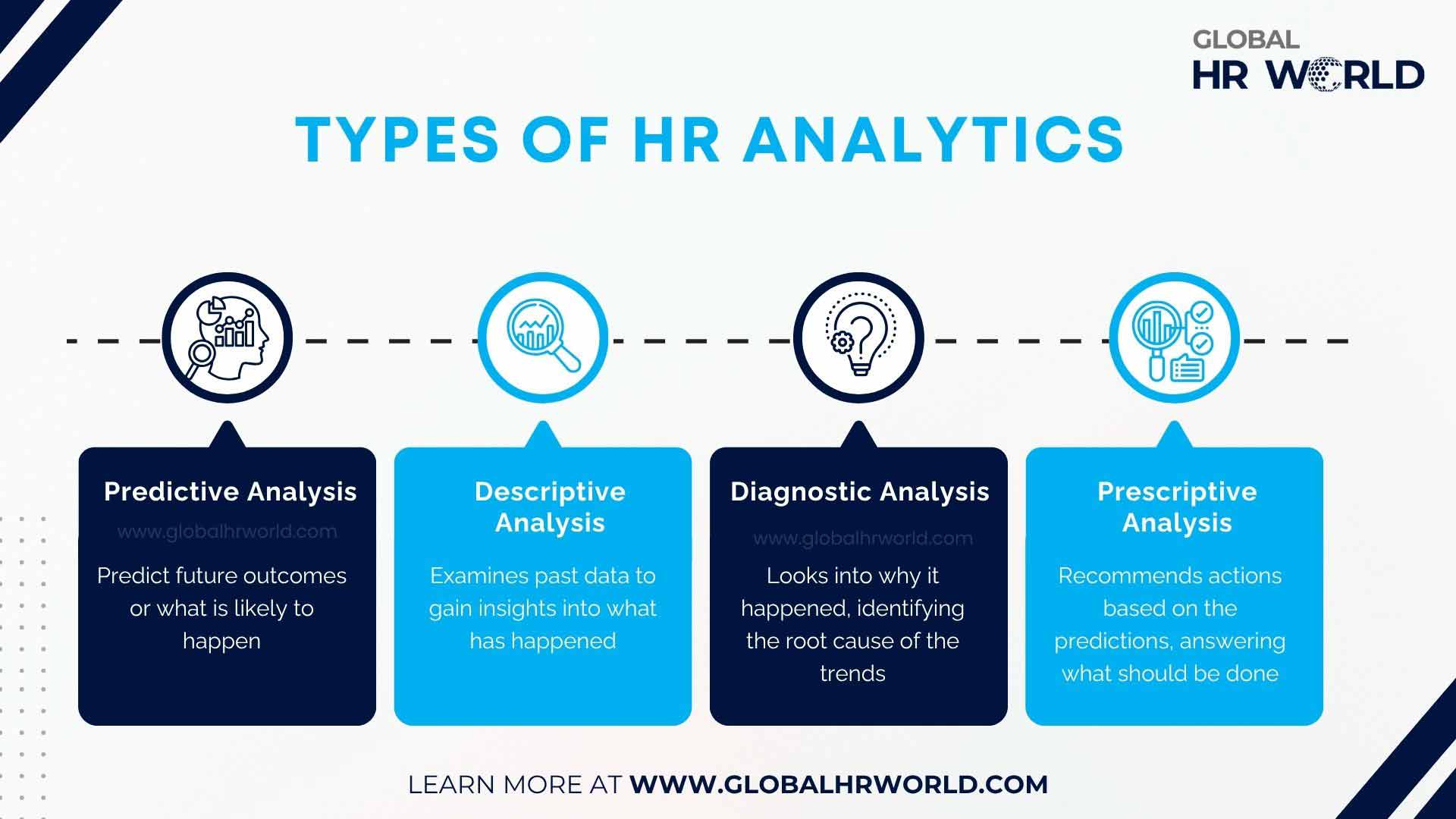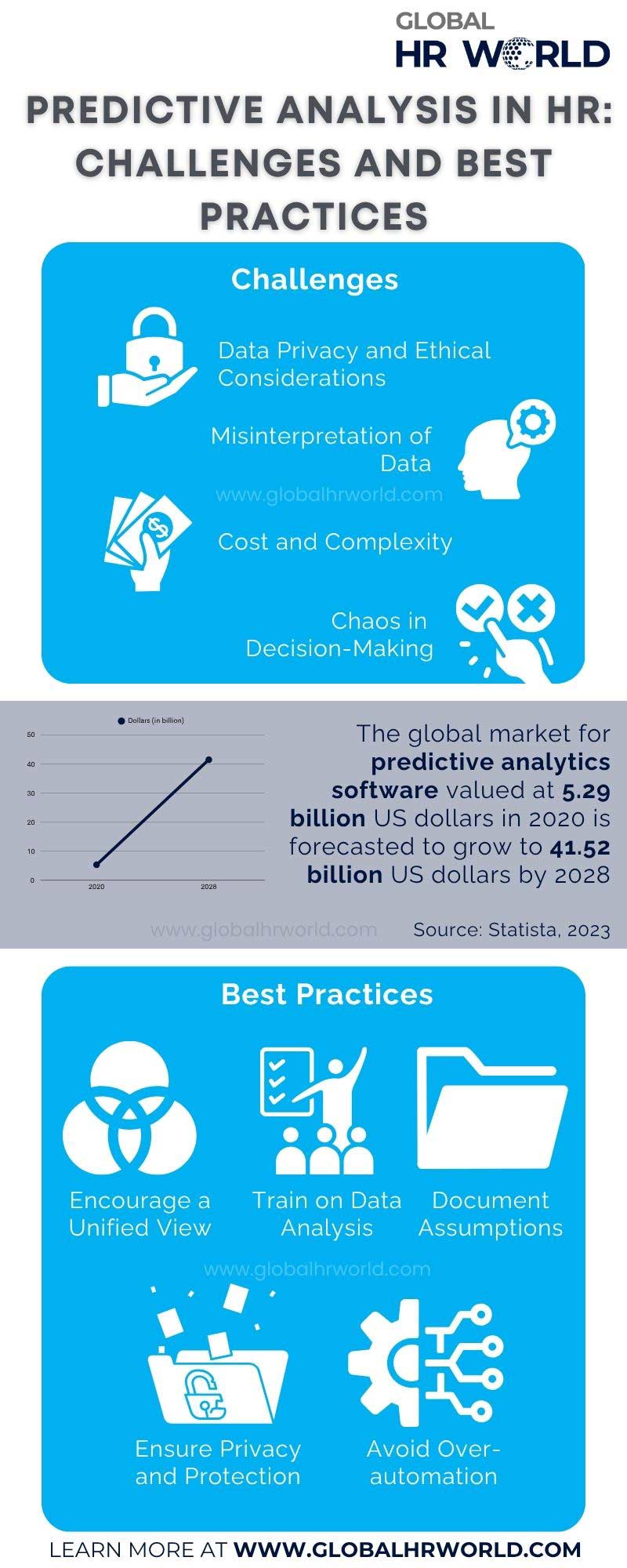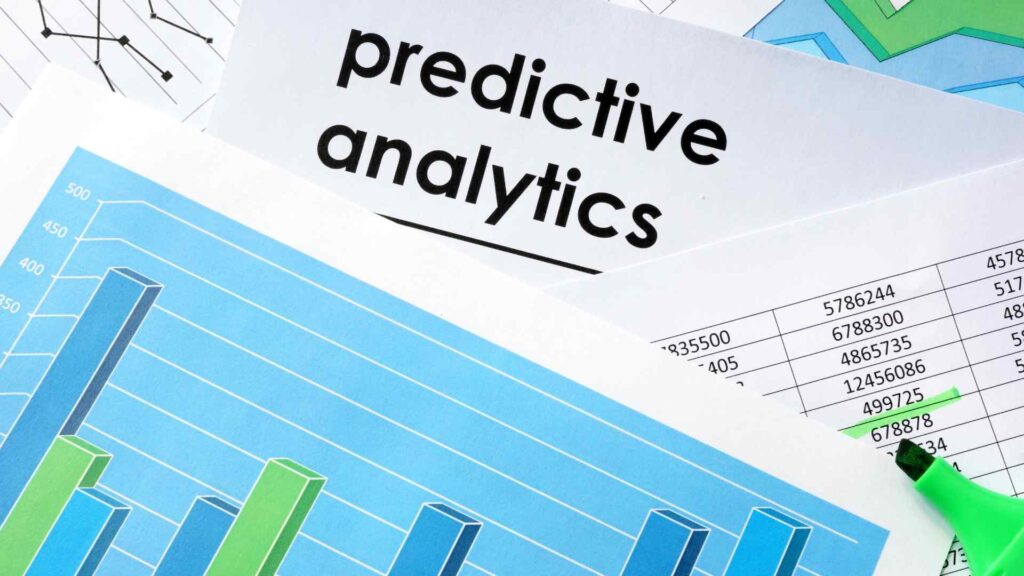Predictive analysis in HR is a game-changer that enables HR leaders to make informed, strategic decisions about their workforce. By identifying patterns and suggesting changes, predictive analysis in HR offers the best possible outcomes to the workplace. Are you curious to learn about predictive analysis in HR and the unique benefits it offers? Dive into the following paragraphs to explore its definition, key advantages, challenges, and best practices for effective use in HR. Read on!
Get Introduced to Predictive Analysis in HR: Definition
Predictive analysis in HR refers to the use of advanced analytics, including historical data, statistical models, data mining, artificial intelligence, and machine learning, to anticipate and forecast future workforce trends. It helps HR professionals predict what is likely to happen in the workplace by identifying risks, patterns, and opportunities. These insights are then used to guide decisions around hiring, talent acquisition, training, employee retention, turnover, workforce planning, and succession strategies. With its wide use in undertaking important business actions, “the global market for predictive analytics software valued at 5.29 billion US dollars in 2020 is forecasted to grow to 41.52 billion US dollars by 2028” (Source: Statista).

Get Familiar with How Predictive Analysis Stands Apart: Differences
While predictive analysis uses predictive models to predict future outcomes or what is likely to happen, descriptive analysis examines past data to gain insights into what has happened. Another analytics model is diagnostic analysis, which looks into why it happened, identifying the root cause of the trends. Prescriptive analysis goes an extra mile by recommending actions based on the predictions, answering what should be done.
Get Attuned to the Value of Predictive Analysis in HR: Benefits
Predictive analysis in HR is valuable because it uncovers distinct patterns and provides accurate forecasts that support better decision-making. Let’s explore how these insights benefit the organization as a whole.
Better Talent Acquisition
Predictive analytics in HR supports talent acquisition by helping organizations hire and recruit the best candidates. By analyzing patterns from previous successful hires, such as the time taken to fill roles, the skills and attributes of top performers, and the most effective hiring platforms and channels, HR teams can refine their recruitment strategies to attract top talent.
Contributes to Employee Retention
Predictive analysis in HR plays a key role in employee retention by identifying potential turnover risks within the organization. It thoroughly examines patterns such as frequent absenteeism, signs of disengagement, and a lack of trust among employees, along with the organizational factors contributing to these issues. Furthermore, the changes related to promotions, salary hikes, and other developments that may influence employee satisfaction are analyzed, enabling HR to implement strategies to retain valuable talent.
Spot Skills Gap
Predictive analysis in HR is highly effective in identifying current skill gaps within the workforce and forecasting future shortages based on evolving roles, upcoming projects, technological advancements, and organizational goals. It also provides insights into which employees are likely to leave, whether through resignation or retirement, and highlights the critical skills that may be lost as a result, enabling HR to plan and make informed decisions. Additionally, predictive analysis evaluates the effectiveness of existing training and development initiatives, enabling leaders to make strategic improvements.
Promotes Succession Planning
Succession planning refers to the process of identifying potential leaders who can fill key organizational roles in the future. By analyzing employees’ work performance and leadership qualities, predictive analysis helps identify potential future leaders, enabling more efficient and strategic succession planning.
Improves Performance
Predictive analysis in HR contributes to improved organizational performance by enabling smarter hiring decisions, fostering employee engagement, and supporting effective talent management. It further helps identify workforce behavior patterns, track performance over time, and anticipate future workforce needs, allowing HR to align people strategies with business goals.
Get Informed on the Limitations of Predictive Analysis in HR: Challenges
While predictive analysis in HR offers valuable insights and supports future-focused planning, it also comes with certain challenges. Let’s comprehend the major challenges.
Data Privacy and Ethical Considerations
One major challenge of predictive analysis in HR is data privacy and ethical considerations. Employees often have concerns about their personal and professional data, especially personally identifiable information being collected, stored, and used without explicit consent. The use of AI and machine learning further raises the risk of cyberattacks and data breaches, leading to resistance and mistrust.
Misinterpretation of Data
HR leaders or decision-makers may mistakenly treat predictive insights as certainties rather than probabilities, leading to misguided decisions. Additionally, relying too heavily on past patterns to forecast future outcomes can result in misreading the data, especially if the context has changed, leading to unintended consequences.
Cost and Complexity
Incorporating predictive analysis in HR processes can be costly and complex as it utilizes advanced tools like machine learning, AI, and predictive models that require significant investment in technology, skilled personnel, and ongoing maintenance. Additionally, the complexity of these systems can make decision-making more difficult.
Chaos in Decision-Making
Another challenge is the potential for chaos or delays in decision-making. Even when predictive analysis accurately identifies patterns and forecasts future trends, organizations may struggle to act on these insights effectively, leading to inconsistent implementation of solutions.
Get Acquainted to Effectively Implement Predictive Analysis in HR: Best Practices
When implementing predictive analysis in HR, consider the following best practices to yield maximized outcomes.
Encourage a Unified View
Integrating data from various sources like performance evaluations, HR software, recruitment tools, and training platforms offers unified and accurate insights on the trend, enabling better forecasting and informed decisions.
Train on Data Analysis
Training HR professionals in data analysis is a critical best practice when implementing predictive analysis. This ensures avoiding misreading and misinterpretation of data and encourages individuals to understand probabilities rather than assuming.
Document Assumptions
Documenting assumptions and projected outcomes is a vital best practice in predictive analysis for HR. After analyzing the data, it’s important to record the assumptions made during the analysis to understand the context behind the predictions. In addition, documenting the predicted outcomes supports accountability and allows HR teams to track the accuracy of the predictions.
Protect Privacy
Implement strong encryption protocols, secure data storage, and access controls to prevent unauthorized use or breaches to ensure transparency and protect the privacy of individuals.
Avoid Over-automation
Avoiding over-automation by ensuring human oversight is a crucial best practice in predictive analysis for HR. While advanced tools like AI and machine learning can process large volumes of data efficiently, they may offer biases present in the data or generate inaccurate predictions requiring human analysis.
Conclusion
In conclusion, predictive analysis in HR leverages advanced analytics, including statistical models, data mining, artificial intelligence, and machine learning to anticipate and forecast future workforce trends. It offers valuable benefits such as improved talent acquisition, enhanced employee retention, and more strategic workforce planning.
However, there are certain challenges, including concerns around data privacy and ethics, fragmented data sources, high implementation costs, and the potential for confusion or delays in decision-making regarding predictive analysis. To fully realize the potential of predictive analysis, it is essential to follow best practices such as integrating data from diverse systems for a unified view, providing training to HR professionals on data interpretation, documenting assumptions and projected outcomes, safeguarding employee privacy, and maintaining human oversight to prevent over-automation and biased outcomes.
Infographic

Knowledge Check!
Frequently Asked Questions (FAQs)
What is predictive analysis in HR?
Predictive analysis in HR refers to the use of advanced analytics, including historical data, statistical models, data mining, artificial intelligence, and machine learning, to anticipate and forecast future workforce trends.
What is the difference between predictive analysis and descriptive analysis?
While predictive analysis uses predictive models to predict future outcomes or what is likely to happen, descriptive analysis examines past data to gain insights into what has happened.
What are the benefits of predictive analysis in HR?
Predictive analysis in HR offers valuable benefits such as improved talent acquisition, enhanced employee retention, and more strategic workforce planning.



